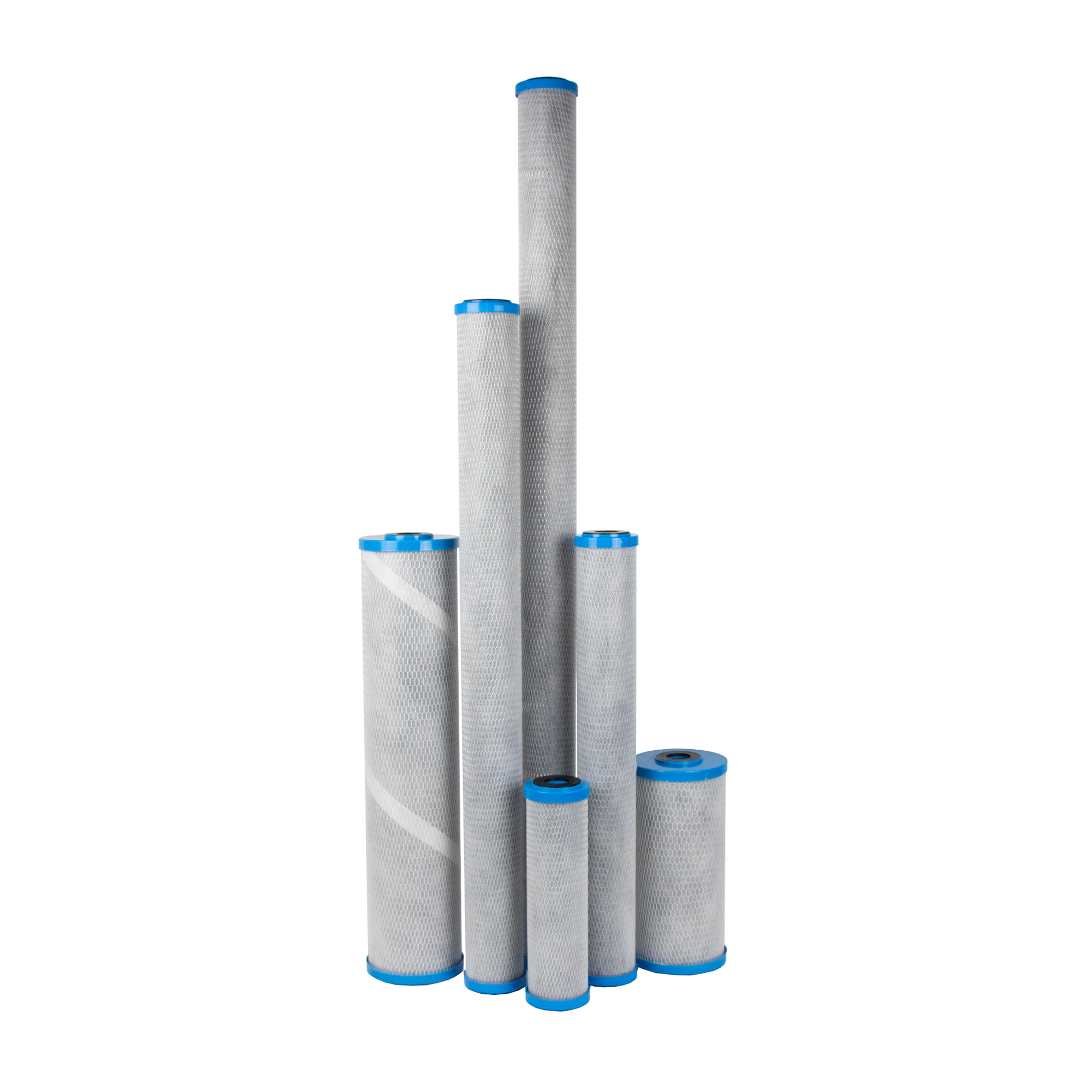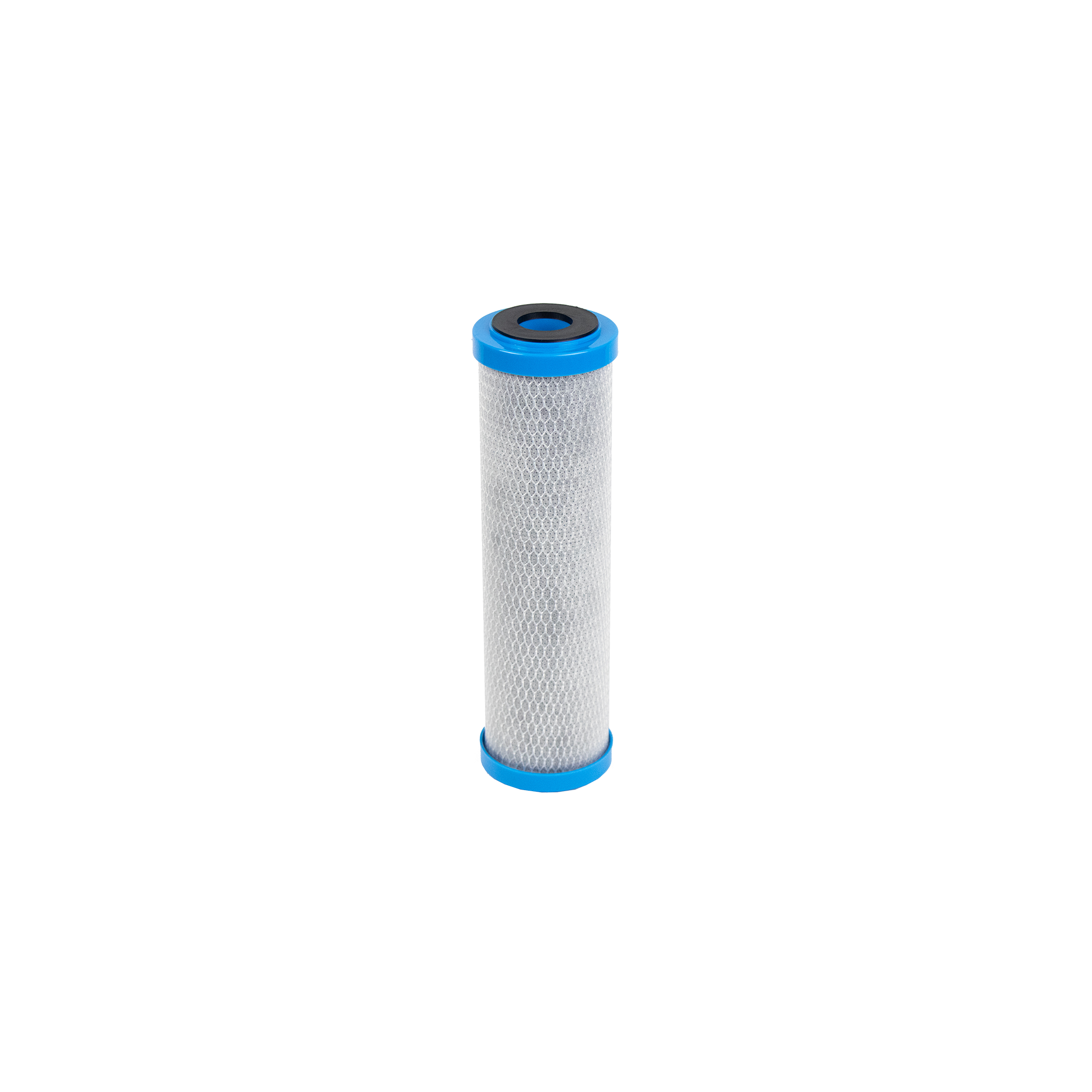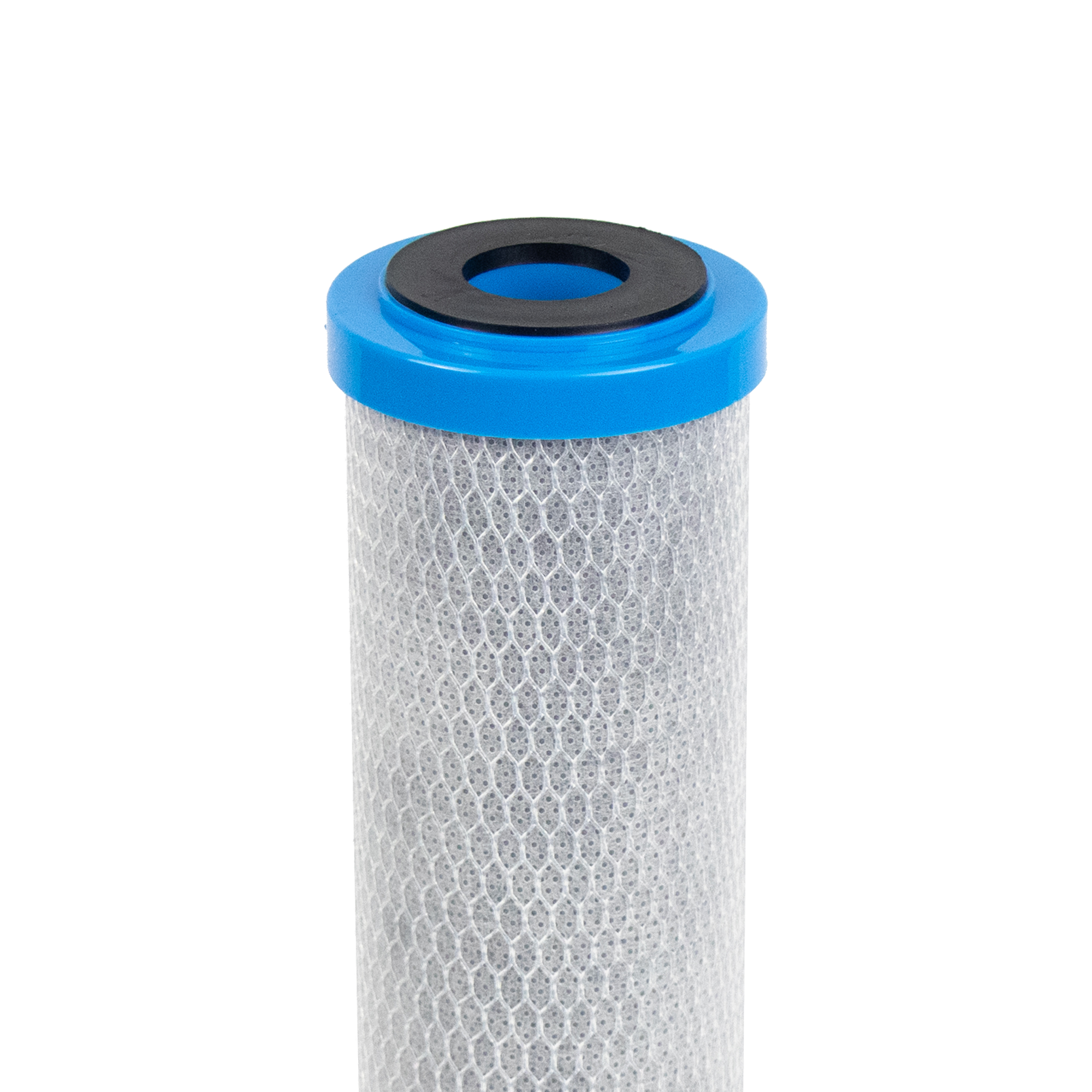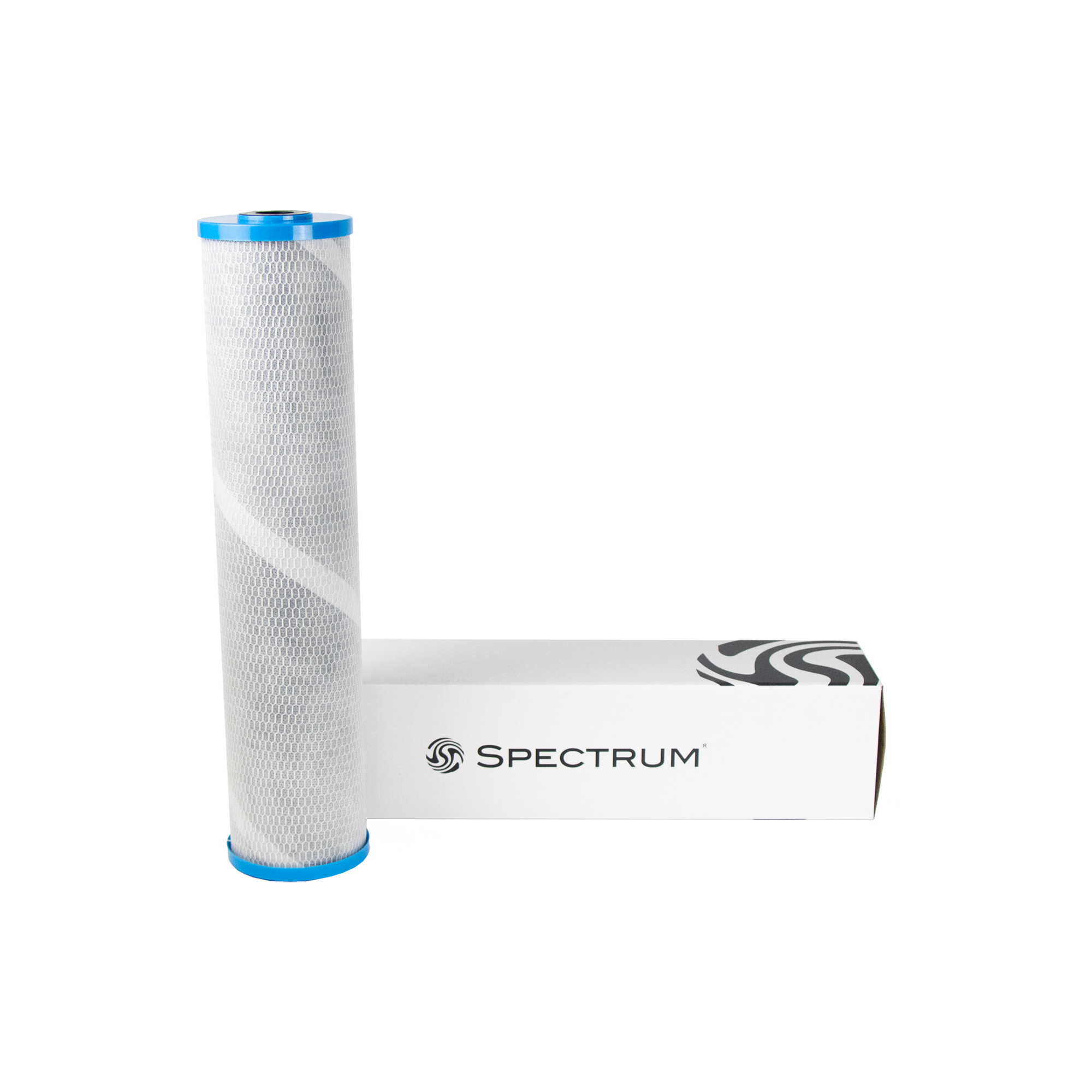FibreOnyx Economic Carbon Filter (EFBC)
- One stage chlorine and sediment removal promoting ease-of-use
- CTO reduction
- Antimicrobial agent applied to prevent bacteria growth
- Unique post-filtration layer to reduce sediment build-up
- 50% reduction in pressure drop over Economic Carbon Block (ECB)
- Gaskets permanently moulded onto end-caps to prevent dislodging
- Domestic and general water supply
- Incoming water for breweries
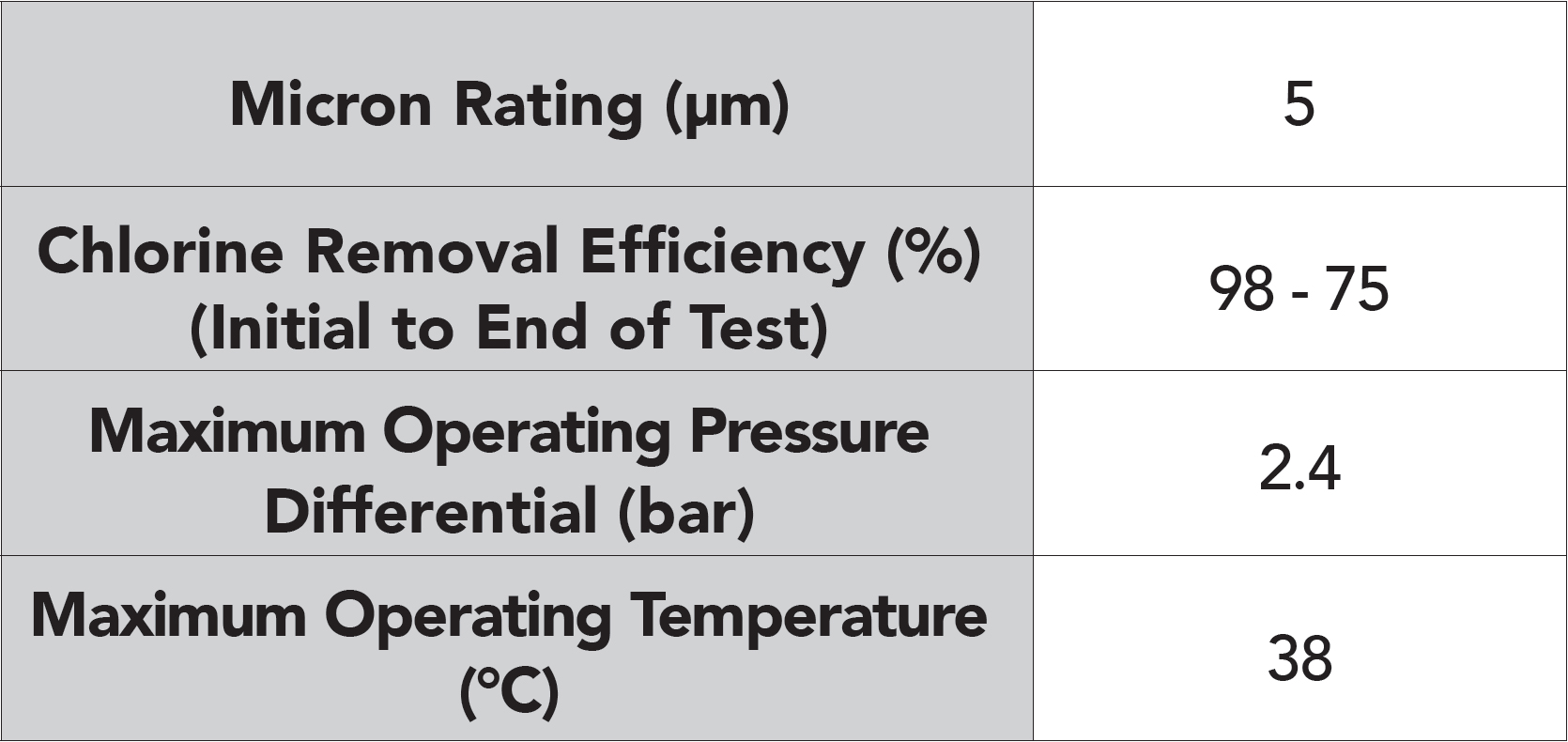

Features & Information
A cartridge focused on providing an economic, practical solution to chlorine, taste, and odour (CTO) control. This cartridge provides all the benefits of activated carbon with the minimum pressure drop of a carbon block.
FAQs - EFBC
The SPECTRUM EFBC cartridge is specifically engineered for the removal of chlorine, taste, and odour (CTO). It is an economical and practical solution for enhancing the taste and odour of treated water.
The SPECTRUM EFBC cartridge utilises modern media with an increased void volume, allowing it to hold more dirt particles while maintaining high flow rates. This design ensures efficient filtration without compromising water flow.
Refers to the distinctive flavour and smell associated with chlorine in water. Chlorine is commonly used as a disinfectant in water treatment processes to kill bacteria, viruses, and other harmful microorganisms. While chlorine is effective in reducing waterborne pathogens it can leave a residual taste (often described as a bleach-like or chemical flavour) and odour in the treated water.
Removing chlorine from water is often desired for several reasons:
- Taste and Odour: chlorine causes an unpleasant taste and odour in water.
- Beverage and Food Quality: natural flavours and characteristics are compromised by the presence of chlorine, specifically yeast.
- Cosmetic and Aesthetics: Chlorine can strip the natural oils from the skin and hair, leading to dryness and potential damage.
- Disinfection Byproducts: Chlorine can react with naturally occurring organic matter in water, forming disinfection byproducts such as trihalomethane and halo-acetic acids. Long-term exposure has been associated with potential health risks, such as cancer.
